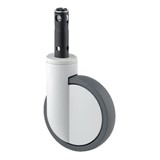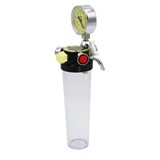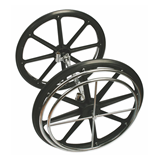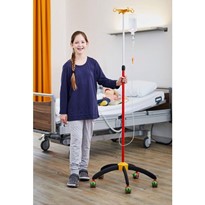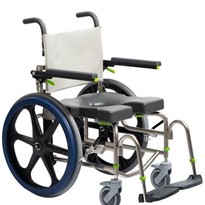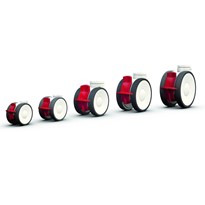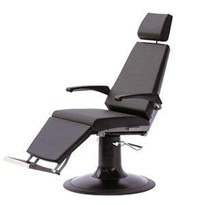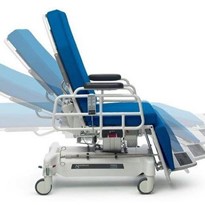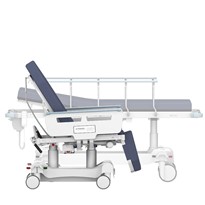It is no secret that one of the most important features on a patient transport stretcher or chair is its wheels.
The castors used on this type of medical equipment globally vary widely from small to large and single to twin wheel designs, with manufacturers’ reasoning stretching from scientific arguments, to supply availability, or maybe the cheapest options to maintain competitiveness.
While many smaller medical carts and trolleys will typically have between 50mm and 100mm diameter castors, equipment that is both larger in size and weight, and carries patients over long distances in large facilities, is more likely to have larger wheels around 150mm to 200mm in diameter.
In this article we explore some of the pros and cons of 150mm twin wheel castors versus 200mm single wheel castors.
150mm twin wheel castors
Pros
- With two wheels (per castor) there is a better weight carrying capacity, as the weight is split and evenly distributed. The less weight that each wheel has to cope with, the easier it will be able to move.
- A twin wheel caster has an ability to turn easily. Its wheels can rotate independently of each other, making turning or reversing directions much easier as the two wheels move in opposite directions.
- A smaller castors size helps to maintain a lower load height within its specific weight capacity range.
Cons
-
The price of a double wheel castor can be higher, not only are there extra wheels, but the internal bracket design of the double-wheel is also stronger making it more expensive.
-
The smaller wheel size may not accommodate outdoor obstructions or rough surfaces as well as a larger diameter wheel.
200mm single wheel castors
Pros
- Predictably the bigger the wheel, the easier it rolls, so you should use casters with the largest wheel diameter that is practical for the job at hand.
- Large wheel sizes will more easily traverse outdoor ground obstructions and result in less transmitted vibration.
Cons
- Single wheel castors may get caught more easily in ridges, gaps or holes depending on the tyre width.
- Large diameter single wheel castors may have lower weight capacity due to extra flex in the wheel size and longer pintle mounting distances.
- A single wheel caster must pivot on itself, creating higher friction with the floor surface when turning.
It is easy to see that there are clear pros and cons to both wheel size and type and interesting to note that despite perception, physical tests have proven that the starting push force to move a heavy trolley can be similar between a larger single wheel castor and a smaller diameter twin wheel castor. The question on what the best castor style is for your facility will be governed by the requirements for use – is it indoor or outdoor? Is it small distances with a lot of maneuvering, or larger distances with long runs? Is it average patient sizes or Bariatric care? There are many other factors and variables in castors that also must be considered such as tyre hardness, conductivity, roller bearing types, waterproofing and lint resistiveness.
Modsel has always chosen their wheel brands, sizes and styles carefully to compliment the products they are on, to ensure the best possible outcomes for the user.




